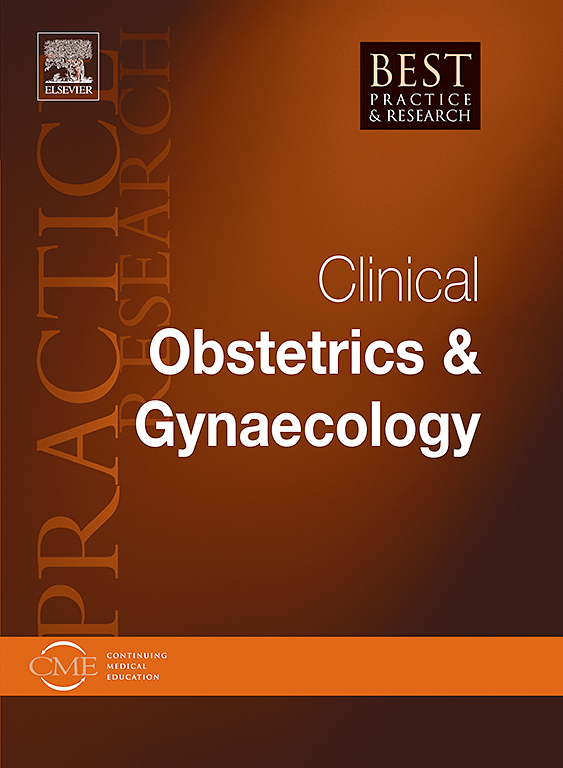The roles of blood picture, haemoglobinopathy traits, and blood groups determined in routine antenatal tests in the screening for complications in pregnancy
IF 4.1
2区 医学
Q1 OBSTETRICS & GYNECOLOGY
Best Practice & Research Clinical Obstetrics & Gynaecology
Pub Date : 2024-12-01
DOI:10.1016/j.bpobgyn.2024.102537
引用次数: 0
Abstract
Routine antenatal tests include haemoglobin measurement, usually with red blood cell indices, white cell and platelet counts, and ABO and Rhesus blood groups, are aimed to screen for iron deficiency anaemia, carriage of haemoglobinopathy traits, and other forms of anaemia or other underlying but undiagnosed conditions. Iron deficiency anaemia has been associated with most of the common pregnancy complications including pre-eclampsia, preterm birth, antepartum and postpartum haemorrhage, low birthweight and small-for-gestational age infants, and impacts long-term neurocognitive and developmental outcomes in the offspring. Increased adverse pregnancy and perinatal outcomes are also found with high haemoglobin, thalassaemia and sickle cell traits, and the non-O blood groups especially group AB. Total white cell, neutrophil, and platelet counts and platelet indices can help to predict gestational diabetes mellitus. Results from these tests can be useful by themselves or used in combination with demographics and biomarkers to enhance the screening for high-risk pregnancies.
常规产前检查中确定的血型、血红蛋白病特征和血型在筛查妊娠并发症中的作用。
常规产前检查包括血红蛋白测量,通常还有红细胞指数、白细胞和血小板计数、ABO 血型和恒河猴血型,目的是筛查缺铁性贫血、血红蛋白病性状携带、其他形式的贫血或其他潜在但未诊断的疾病。缺铁性贫血与大多数常见的妊娠并发症有关,包括先兆子痫、早产、产前和产后出血、低出生体重儿和小于胎龄儿,并影响后代的长期神经认知和发育结果。高血红蛋白、地中海贫血症和镰状细胞性状以及非 O 型血,尤其是 AB 型血,也会增加不良妊娠和围产期结局。白细胞总数、中性粒细胞、血小板计数和血小板指数有助于预测妊娠糖尿病。这些检测结果既可单独使用,也可与人口统计学和生物标志物结合使用,以加强对高危妊娠的筛查。
本文章由计算机程序翻译,如有差异,请以英文原文为准。
求助全文
约1分钟内获得全文
求助全文
来源期刊
CiteScore
9.40
自引率
1.80%
发文量
113
审稿时长
54 days
期刊介绍:
In practical paperback format, each 200 page topic-based issue of Best Practice & Research Clinical Obstetrics & Gynaecology will provide a comprehensive review of current clinical practice and thinking within the specialties of obstetrics and gynaecology.
All chapters take the form of practical, evidence-based reviews that seek to address key clinical issues of diagnosis, treatment and patient management.
Each issue follows a problem-orientated approach that focuses on the key questions to be addressed, clearly defining what is known and not known. Management will be described in practical terms so that it can be applied to the individual patient.

 求助内容:
求助内容: 应助结果提醒方式:
应助结果提醒方式:


